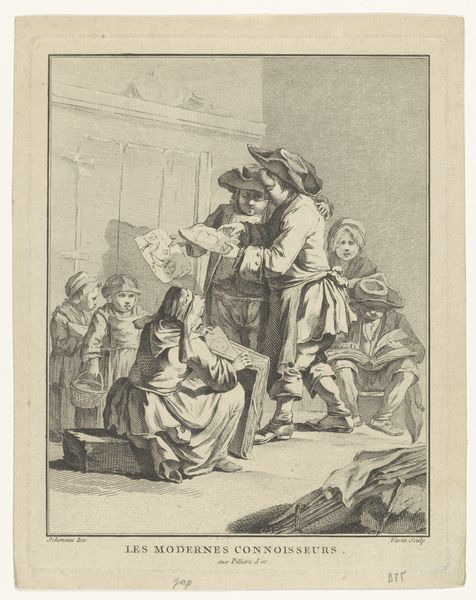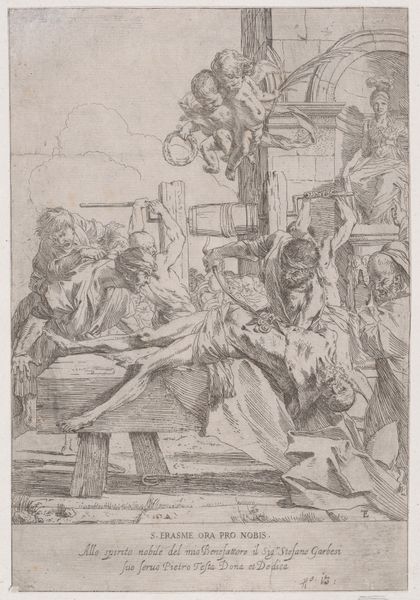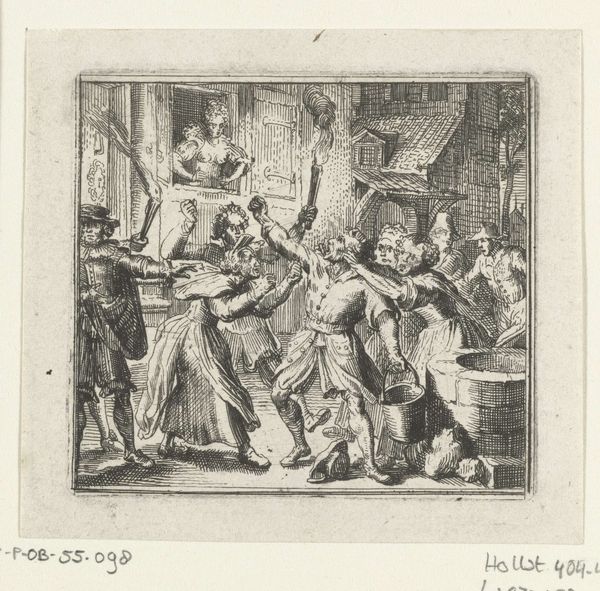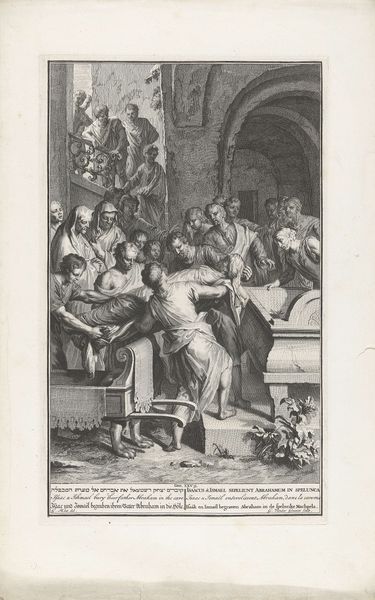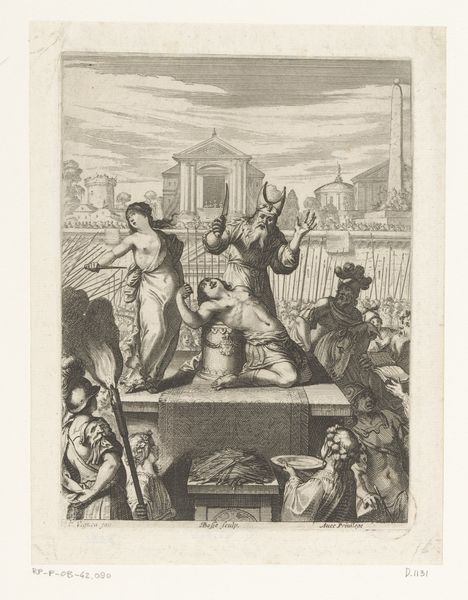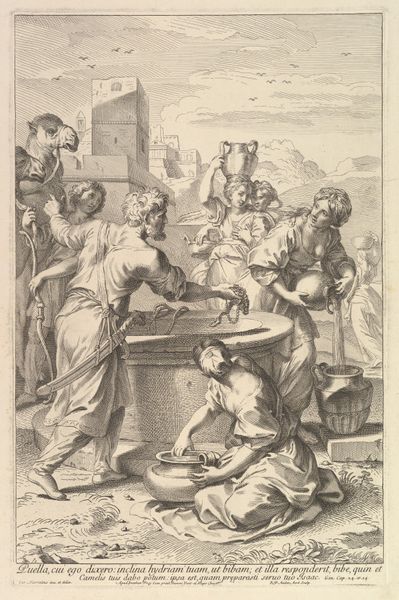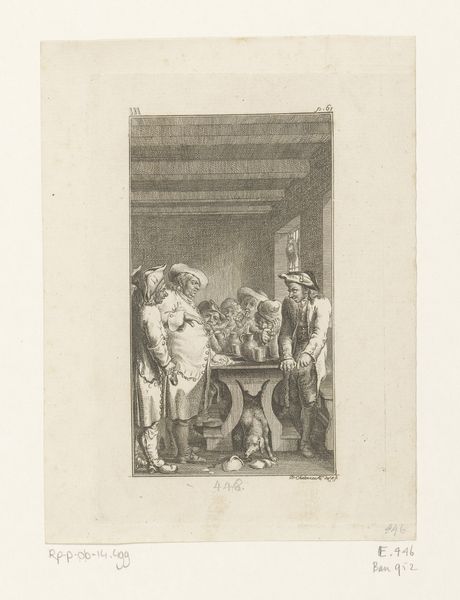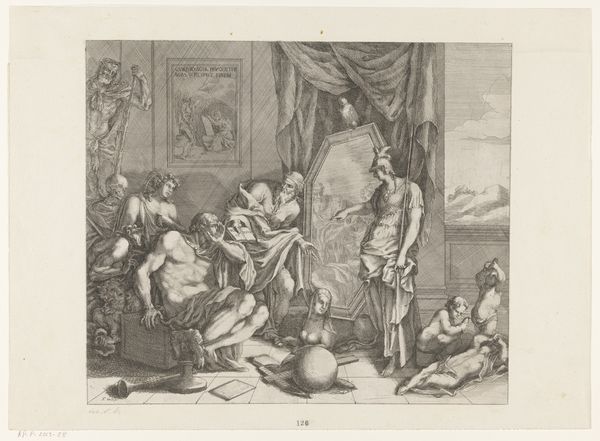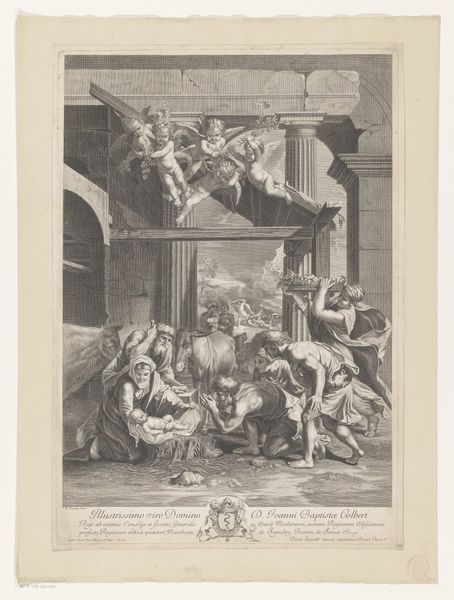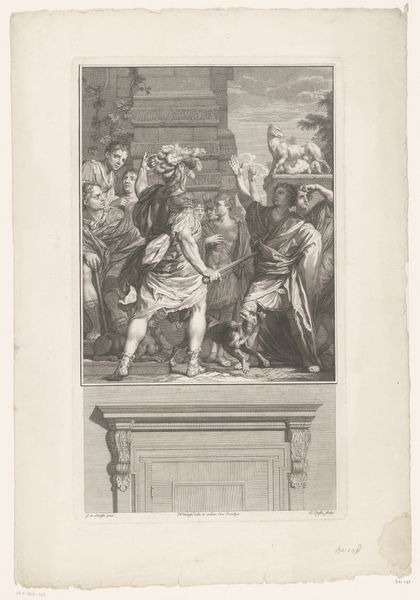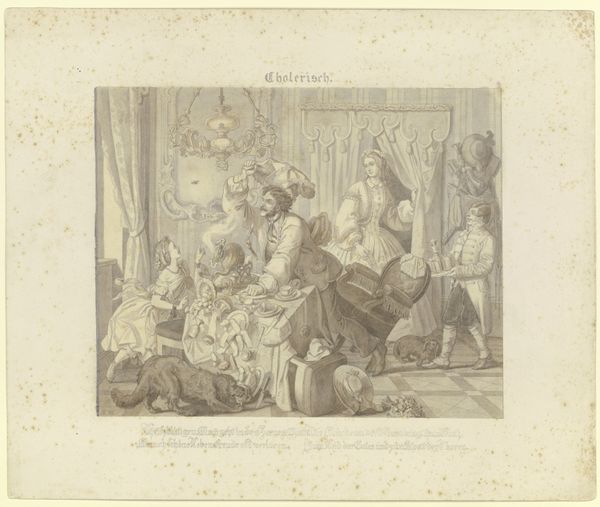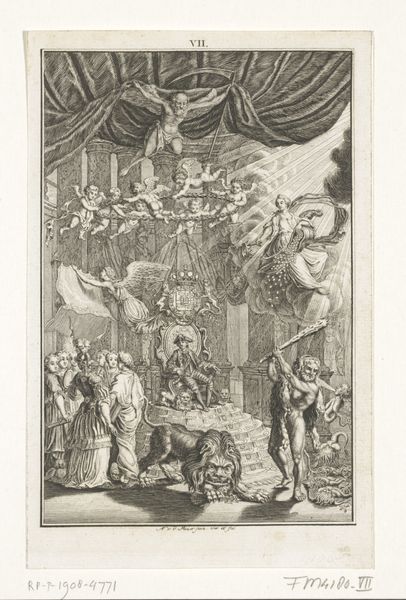
drawing, print, ink
#
drawing
#
comic strip sketch
#
light pencil work
#
narrative-art
#
baroque
# print
#
pen sketch
#
figuration
#
personal sketchbook
#
ink
#
sketchwork
#
ink drawing experimentation
#
pen-ink sketch
#
sketchbook drawing
#
history-painting
#
storyboard and sketchbook work
#
sketchbook art
Dimensions: height 265 mm, width 196 mm
Copyright: Rijks Museum: Open Domain
Editor: We’re looking at Pietro Testa’s “Martyrdom of Erasmus,” created around 1630 or 1631. It’s a print made with ink, and what strikes me immediately is its raw, almost frenetic energy. What do you see in this piece, considering its historical context? Curator: Indeed, it’s powerful, isn't it? From a historical perspective, prints like these played a vital role. In the 17th century, they weren’t just art objects, but crucial tools for disseminating information and shaping religious and political narratives. The graphic depiction of Saint Erasmus's gruesome martyrdom was designed to reinforce religious convictions and perhaps, implicitly, comment on the socio-political tensions of the time. Consider the Counter-Reformation – how might an image like this have been used by the Church? Editor: That makes a lot of sense. Seeing it as a piece of propaganda gives the violent imagery a totally different meaning. But isn’t there a risk of simply reinforcing violence, even under the guise of religious fervor? Curator: That's precisely the complex ethical dilemma inherent in politically charged art. While aiming to inspire faith and loyalty, the overt display of violence might normalize, or even glorify, cruelty. Did Testa, through his choices in composition and detail, endorse or subtly critique this kind of brutal spectacle? These are crucial questions to ask when evaluating the public role of such imagery. What do you think the reaction was to a piece like this at the time? Editor: That’s fascinating – I hadn’t considered the ethical implications so deeply before. Now I see the image as not just a depiction of martyrdom, but a potent tool with potential sociopolitical consequences. Curator: Exactly. By examining art within its historical framework, we unlock deeper layers of meaning and gain insight into the complex relationship between art, power, and society.
Comments
No comments
Be the first to comment and join the conversation on the ultimate creative platform.
